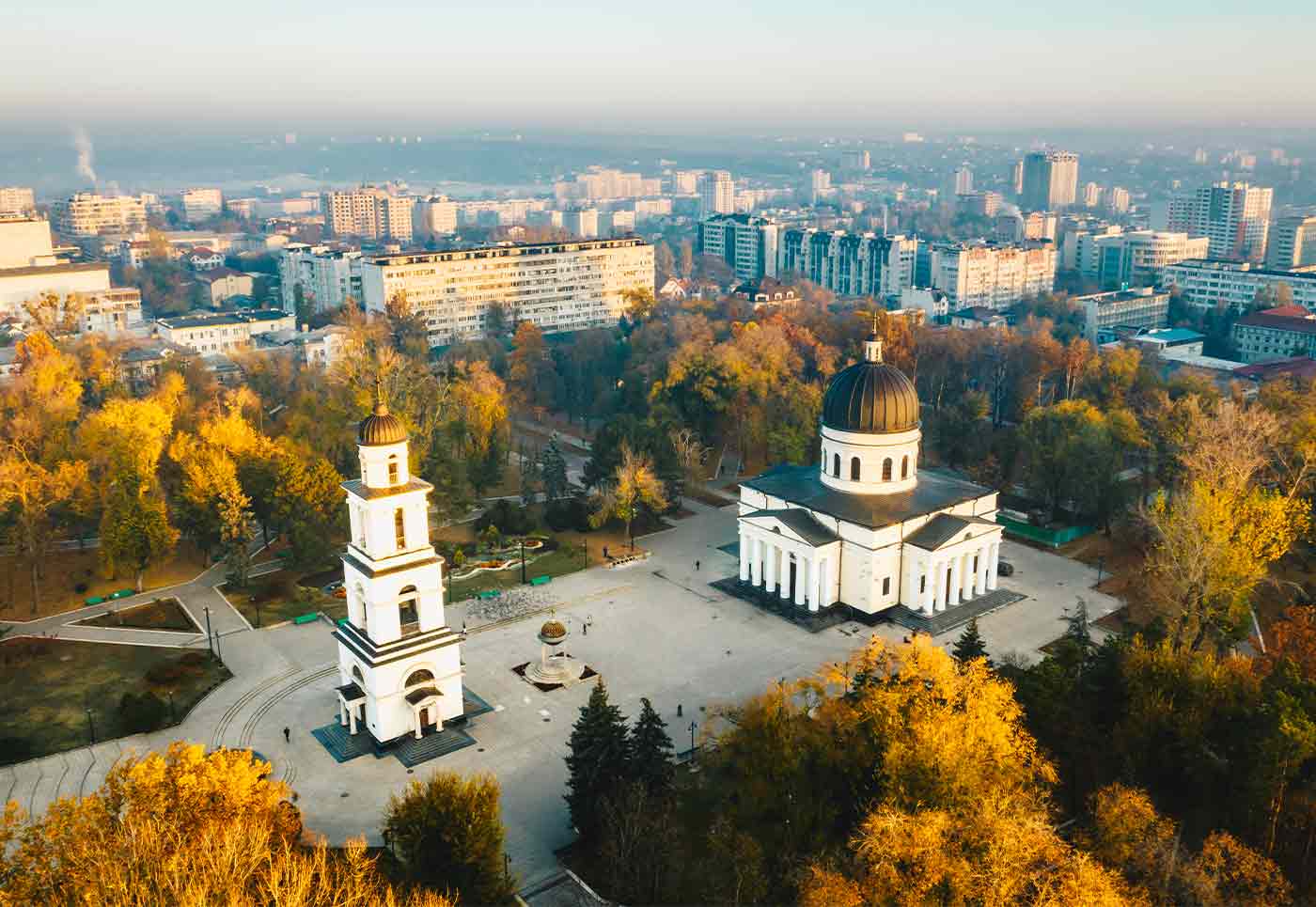
8 things you didn’t know about Moldova
Here at TransferGo, we’ve been busy. We’ve recently launched and enabled fast transfers to a wide range of new destinations. And one of these places is—you guessed it—Moldova. It got us thinking. How much do we know about Moldova?
Well, the close relationship this small Eastern European has with its neighbour Romania, its stunning countryside and the glorious wine (more on that in a minute) are just some of the things we know about Moldova. But, on the whole, it does keep a low profile. And a lot of people in Western Europe and the wider world know very little about this beautiful gem of a country.
This is precisely why we’re revealing a few fascinating things you might not have known about Moldova. Here goes.
Moldova is a relatively new country
Moldova declared independence in 1991 and is a parliamentary republic. But, before that, it existed under a different name and as part of other things.
Known as Bessarabia, Moldova was part of the Romanian principality of Moldavia until 1812 and bounced between Russian and Romanian control for a while. After World War II, Moldova became part of the USSR, before eventually gaining its independence—and its name— in 1991, and subsequently joining the UN in 1992.
Being bilingual (or even trilingual) is quite normal in Moldova
While Romanian is the official language of Moldova, many Moldovans also speak Gagauz and/or Russian—with some even speaking all three. Gagauz is a Turkic language that’s also spoken in parts of southern Ukraine, southern Russia and Turkey. But, despite there being over 126,000 Gagauz people living in Moldova alone (according to this study), their language is in danger of extinction.
And the Moldovan people haven’t just had three languages to deal with, but also two alphabets—since the Soviets converted Moldovan Romanian to the Cyrillic alphabet in 1939. 50 years later, the Moldovan government changed it back to the Latin alphabet. And it’s still used today.
The capital of Moldova is Chișinău, which…
…was destroyed in 1940
Three things happened to cause something of the destruction of Chisinau, the capital of Moldova, in 1940 and 1941. First, the Red Army invaded in June 1940. Then, just four months later, Chisinau fell victim to an earthquake measuring 7.3 on the Richter scale. In 1941, the Luftwaffe attacked the capital, bombing and destroying the little that remained.
…isn’t pronounced how many of us thought
You wouldn’t be alone in thinking that Chisinau is pronounced like… the chi in ‘chisel’ + the zi in ‘Zimbabwe’ + the ‘ou’ of ‘ouch’ (what Brits say when they hurt themselves). But it’s actually pronounced ‘ki-shuh-naw’. We need to brush up on our capital cities!
Moldova is… possibly the wine expert of the world
Step aside, Tuscany. On your bike, Bordeaux. Sit down, Stellenbosch! There’s a new sommelier in town (in the world), and that’s Moldova. Here’s why.
Moldova has three famous and historical wine-producing regions
These are Valul lui Traian, Codru and Stefan Voda. The wine produced in these regions is given the stamp of Protected Geographical Indications (PGI), meaning that ‘the product’s given quality, reputation or other characteristics must be attributable to this area and at least one of the production steps must take place in the defined area.’, according to the Food Standards Agency.
Moldova is home to the world’s largest wine cellar
The Mileștii Mici cellar in Moldova is said to be the world’s largest wine cellar. With almost two million bottles inside, we can kinda see why. The most expensive wine bottles in this cellar go for roughly €480 a pop.
Moldova has a whole day (and more) dedicated to wine
National Wine Day (Ziua Naţională a Vinului) usually falls on a weekend and is often stretched into a week-long event. Each October, wine producers open up their vineyards and cellars to let people see how they make their wines, and they organise tastings, too—many of which are deliciously affordable. A free bus takes you between the wineries because, well, nobody should be driving!
There’s a bottle-shaped building in Moldova—and it’s the world’s largest
Talk about not doing things by halves. This bottle building houses the Bottle Museum (what else?) and you’ll find it in Tirnauca, near the town of Tiraspol in southeastern Moldova.
But, sadly, not everyone appreciates fine wine…
Moldovan wine is banned in Russia
The two countries had something of a diplomatic “falling out” in 2006, resulting in Russia banning both Moldovan and Georgian wine. This was terrible for the Moldovan economy. Why? Apparently, Russia imported almost 90% of all Moldovan wine.
Moldova had no president for almost 3 years
In 2012, judge Nicolae Timofti was voted in as the president of Moldova—after 917 days without one! This was because of some complex election results and the formation of a coalition opposition government that boycotted the first round of elections. Some violent protests ensued, and some other troubling stuff went down. Timofti’s appointment brought some stability back, and he presided until the end of 2016.
Moldova is the least visited country in Europe
And we’re asking ourselves why. After all, a few Transfernauts (who are either Moldovan or have travelled around the region) say it’s stunning. It’s certainly on our bucket list for post-Covid culture.
But, weirdly, it looks like in previous years very few people have shown an interest. Apparently, in 2016, only 121,000 foreigners entered the country. Based on the number of visitors per resident of the country, only Bangladesh and Guinea had fewer than Moldova. This is according to Priceonomics.
The national animal of Moldova is an auroch
Don’t worry—we didn’t know what it was, either. An auroch is—or shall we say, was—a giant cow. Sadly, aurochs became extinct. But not before their beauty had been captured by Moldovans. They later depicted their glorious head on a shield in the middle of the Moldovan national flag.
But Moldova also loves sheep
Moldova has kind of “adopted” a traditional Romanian ballad about sheep—and printed the first two verses on its banknotes. The ballad is called Miorița. It’s a famous pastoral piece of literature, in which a magical sheep tells its Moldavian shepherd that two other shepherds the guy’s been hanging out with—a Hungarian and a Vrâncean—want to murder him. Yikes. Or rather, baaa.
______________
Do you have some fun facts of your own about Moldova? Share them with us on Instagram. We’ll reshare our favourites! Don’t forget to tag us at @transfergo.
And if you want to send money, sign up now for easy online money transfers with TransferGo.
Popular articles
Invite friends to TransferGo, earn £20









